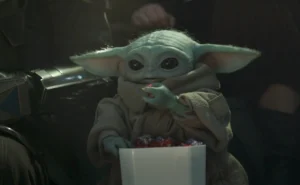When Redbone released “Come and Get Your Love” in January 1974, they could not have predicted the strange, winding afterlife their song would enjoy. Originally a smooth funk-rock anthem that cut across American radio, it was a Top 5 Billboard Hot 100 hit, lodged firmly in the cultural fabric of the mid-1970s. Yet five decades later, it is not merely nostalgia that brings “Come and Get Your Love” back into the conversation — it is a generational rediscovery powered by film soundtracks, TikTok memes, and the ongoing global search for music that feels both joyous and timeless.
Redbone: A Band Like No Other
Redbone was not just another 70s rock group. Formed by brothers Pat and Lolly Vegas — both of Mexican and Native American heritage — the band was groundbreaking in ways that were rarely acknowledged at the time. Their very name, “Redbone,” was a colloquial term from the American South for individuals of mixed race, and the band embraced it defiantly.
Unlike many contemporaries who borrowed vaguely from Indigenous imagery, Redbone was explicit and unapologetic about their identity. On stage, the members often performed in full Native regalia, mixing feathers, beadwork, and painted faces with electric guitars and amplified drums. It was both spectacle and statement: a direct assertion that Native American musicians could not only participate in mainstream rock but bend it to their own style.
“Come and Get Your Love” crystallized this fusion. Funk basslines, psychedelic-leaning guitar tones, and an unforgettable vocal melody combined into a sound that was both quintessentially 70s and unmistakably Redbone.
1974: America’s Soundtrack of Change
The 1970s were a decade of transition — politically, socially, and musically. The Vietnam War had left scars, the Watergate scandal was unraveling faith in government, and popular music reflected the turbulence. Hard rock, funk, soul, disco, and singer-songwriter introspection were all competing on the airwaves.
In this context, “Come and Get Your Love” stood out. It wasn’t angry, like much of the protest rock. It wasn’t purely escapist disco either. Instead, it radiated warmth and affirmation. Its refrain — “Come and get your love” — felt like a simple invitation in an era of complexity. The song climbed to No. 5 on the Billboard Hot 100 in April 1974 and stayed on the charts for 18 weeks. Its success was significant: here was a band with visible Native American identity breaking into the mainstream in a way few had before.
Between Fame and Forgetting
Despite the huge success of “Come and Get Your Love,” Redbone’s fame was uneven. They were typecast in the U.S. as a one-hit wonder, even though they released several albums and were bigger in Europe, where audiences appreciated their funk-rock blend. After the late 70s, the band largely faded from mainstream attention.
What endured, however, was the song’s joyful energy. DJs kept it alive at parties, retro radio ensured it never disappeared, and for Native American musicians, it remained a point of pride. Yet for the general public, “Come and Get Your Love” was a hazy 70s memory, recognized by melody but not always by name.
A Modern Resurrection
The song’s biggest resurrection came in 2014, when Marvel’s Guardians of the Galaxy used it in its opening sequence. Chris Pratt’s Peter Quill — headphones on, strutting across a desolate alien landscape — lip-synced and danced to Redbone’s classic. Suddenly, a new generation of listeners was exposed to the track, and streaming numbers skyrocketed.
In the streaming era, the placement of a 40-year-old song in a blockbuster film can have explosive consequences. Spotify reported double-digit increases in Redbone’s streams week after week following the movie’s release, and YouTube comments filled with young fans discovering the song for the first time. What had once been a nostalgic gem for 70s enthusiasts became a viral anthem once again.
TikTok and the Meme Economy
If Marvel gave the song its first revival, TikTok gave it its second. Over the past few years, “Come and Get Your Love” has been used in countless short-form videos: dance trends, comedic edits, nostalgic tributes. Its funky groove and repetitive chorus make it perfect for looping clips, while its cultural association with fun and carefree vibes keeps it in circulation.
For Redbone, TikTok’s adoption is almost poetic. The song, born in a decade where mass media still dictated taste, is now thriving in the most democratized form of distribution ever invented. Teenagers who may have never heard of vinyl or 70s funk now move their bodies, film themselves, and circulate the track as though it had just dropped on Spotify last week.
A Symbol of Representation
Beyond its musical charm, “Come and Get Your Love” holds symbolic importance. Native American musicians have long been excluded from the canonical narratives of rock and pop. Redbone challenged that invisibility. Their success with this song, and its continued relevance, ensures that Native identity has a permanent place in the story of American music.
In recent years, Indigenous scholars and musicians have re-examined Redbone’s contribution, linking it to broader efforts to recognize Native artistry in mainstream spaces. The TikTok revival is not just a meme — it is, perhaps inadvertently, a continuation of that recognition.
Redbone in Retrospect
Today, Redbone is no longer dismissed as a one-hit act. “Come and Get Your Love” has brought renewed attention to their discography and their pioneering role as Native American musicians in mainstream rock. The song’s resurgence has also sparked reissues, retrospectives, and critical essays that situate them within the 70s pantheon.
This reappraisal is long overdue. Redbone not only gave the world a timeless anthem but challenged stereotypes, opened doors, and used their platform to assert cultural pride. Their visibility in the 1970s paved the way, however subtly, for later generations of Native musicians.
The Larger 70s Revival
The return of “Come and Get Your Love” fits neatly into a broader 70s revival. From the resurgence of disco sounds in Dua Lipa’s hits to the retro-aesthetic videos of Silk Sonic, mainstream pop is constantly mining the 70s for inspiration. The era’s combination of lush instrumentation, groovy rhythms, and unapologetic fun resonates in times of uncertainty. Just as 1974 was a turbulent year in America, 2025 is no less so — and perhaps that explains why people keep reaching for this joyful, affirming track.
More Than a Trend
Trends come and go, but Redbone’s “Come and Get Your Love” has outlived trend cycles. It is a song with staying power, one that feels at home in the 70s, in a Marvel blockbuster, or on TikTok. Its endurance speaks to music’s ability to transcend decades, cross cultural barriers, and find new audiences again and again.
For Redbone, the song is more than a hit — it is a legacy. For listeners, it is proof that love, groove, and identity remain universal. And for the broader music world, it is a reminder that sometimes the most unlikely songs become the most eternal.
No comments yet.








